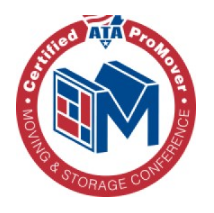Planning Your Move? Your Ultimate Guide to Stress-Free Relocation

Moving to a new home can be an exciting adventure, but it can also be a daunting task without proper preparation. The key to a successful and stress-free move lies in thorough planning, efficient decluttering, and strategic packing. By breaking down the moving process into manageable steps and staying organized, you can minimize the chaos and ensure a smooth transition to your new home.
Whether you’re a first-time mover or a seasoned pro, this comprehensive guide will walk you through the essential aspects of moving preparation. From creating a detailed timeline and establishing a realistic budget to decluttering your belongings and packing your possessions with care, you’ll discover valuable tips and strategies to make your move a breeze.
We’ll also explore the importance of preparing your new home before the big day and share helpful advice on settling in and making your new space feel like home.
So, let’s dive in and learn how to master the art of moving preparation, ensuring that your journey to your new home is filled with excitement and anticipation rather than stress and overwhelm.

Early Planning: The Key To A Smooth Move
The foundation of a successful move lies in thorough planning and preparation. By starting the planning process early, you can minimize stress, avoid last-minute rushes, and ensure a smooth transition to your new home.
In this section, we’ll explore the essential aspects of early planning, including creating a comprehensive moving timeline, establishing a realistic budget, deciding between hiring movers or embracing a DIY approach, gathering essential packing supplies, and notifying important parties of your upcoming move.
Creating A Comprehensive Moving Timeline
A well-structured moving timeline is crucial for staying organized and on track throughout the moving process.
By breaking down tasks into manageable steps and assigning deadlines, you can ensure that nothing falls through the cracks. Let’s take a closer look at what your moving timeline should include at various stages leading up to your move.
Two Months Before Moving Day
- Research and compare moving companies or rental truck options
- Notify your landlord or property manager of your move-out date
- Create a detailed inventory of your belongings
- Begin decluttering and sorting through your possessions
- Plan a garage sale or donate unwanted items to charity
One Month Before Moving Day
- Confirm your moving date and book your chosen moving service or rental truck
- Begin packing non-essential items and rarely used rooms
- Arrange for the transfer of utilities and services to your new home
- Update your address with important parties, such as banks, employers, and subscriptions
- Plan for the safe transport of valuable or sentimental items
Two Weeks Before Moving Day
- Continue packing, labeling boxes clearly with their contents and destination room
- Arrange for childcare or pet care on moving day, if necessary
- Confirm details with your moving company or rental truck provider
- Plan meals leading up to moving day to minimize food waste
- Begin cleaning your current home as rooms become emptied
One Week Before Moving Day
- Finish packing remaining items, leaving only essentials for the final days
- Prepare an “essentials” box with items you’ll need immediately upon arriving at your new home
- Confirm utility connections and disconnections for both your current and new home
- Arrange for the return of any borrowed items and the pickup of rented moving equipment
- Conduct a final walk-through of your current home to ensure nothing is left behind
Establishing A Realistic Moving Budget
Moving can be a significant expense, so it’s essential to establish a realistic budget to avoid financial strain. By carefully considering all the costs associated with your move, you can make informed decisions and allocate your resources effectively.
Factoring In Professional Moving Services
If you decide to hire professional movers, research and compare prices from multiple companies. Request detailed quotes that include all services, such as packing, loading, transportation, and insurance.
Keep in mind that the cost of long distance moving can vary significantly from local moves. Use a moving services cost calculator to estimate your expenses based on factors like distance, home size, and the number of belongings.
Calculating Costs For A DIY Move
If you opt for a DIY move, factor in the costs of renting a moving truck, purchasing packing supplies, and any additional equipment or services you may need, such as dollies or furniture pads.
Don’t forget to account for fuel costs and potential overnight accommodations if you’re moving a long distance. Research the average cost for moving company services in your area to determine if a DIY move is indeed the most cost-effective option.
Deciding Between Hiring Movers Or Embracing A DIY Approach
One of the most significant decisions you’ll make when planning your move is whether to hire professional movers or tackle the move yourself. Consider factors such as your budget, the distance of your move, the complexity of your belongings, and the time and effort you’re willing to invest.
If you have a large home, valuable or delicate items, or limited time, hiring professional movers for home moving may be the most practical choice. However, if you have a smaller move, a tight budget, or enjoy a hands-on approach, a DIY move could be a suitable option.
Gathering Essential Packing Supplies
Having the right packing supplies is crucial for ensuring the safety and organization of your belongings during the move. Make a list of the materials you’ll need, such as boxes, packing tape, bubble wrap, packing paper, and labels.
Consider purchasing or renting specialty boxes for items like wardrobes, dishes, or electronics. Don’t forget to gather tools like scissors, box cutters, and markers for labeling. To save money, consider sourcing free boxes from local stores or online community groups.
Notifying Important Parties Of Your Upcoming Move
As your moving day approaches, it’s essential to notify important parties of your change of address. This includes updating your information with government agencies, financial institutions, healthcare providers, and subscription services.
Provide your new address to your employer, school, and any other relevant organizations. Don’t forget to arrange for mail forwarding with your local post office to ensure you don’t miss any important correspondence during the transition.
By focusing on early planning and addressing these key aspects, you’ll lay a strong foundation for a smooth and successful move. In the following sections, we’ll dive into the specifics of decluttering, packing, and preparing your new home for a seamless transition.
Decluttering: Lighten Your Load Before The Big Day
Before diving into the packing process, it’s essential to take a step back and assess your belongings with a critical eye. Decluttering not only lightens your load and reduces the number of items you need to move, but it also provides an opportunity to start fresh in your new home.
In this section, we’ll explore effective strategies for decluttering, including the “6-Month Rule,” selling unwanted items, donating to charitable organizations, and properly disposing of items that cannot be sold or donated.
Assessing Your Belongings With A Critical Eye
Begin the decluttering process by systematically going through each room in your home, evaluating every item you own. Ask yourself questions like, “When was the last time I used this?” or “Does this item bring me joy or serve a purpose?” Be honest with yourself and let go of items that no longer fit your lifestyle or hold sentimental value.
Remember, the less you have to move, the easier and more cost-effective your move will be.
Implementing The “6-Month Rule” For Easier Decision-Making
If you find yourself struggling to decide whether to keep or discard an item, try implementing the “6-Month Rule.” If you haven’t used or worn an item in the past six months (with the exception of seasonal items), it’s likely that you won’t miss it in your new home.
This rule can be particularly helpful when decluttering closets, kitchen gadgets, or hobby supplies. By letting go of unused items, you’ll create space for the things that truly matter to you.
Exploring Selling Options For Unwanted Items
Once you’ve identified items you no longer need or want, consider selling them to offset some of your moving expenses.
There are several options available for selling your unwanted belongings, each with its own advantages and considerations.
Hosting A Successful Garage Sale
Hosting a garage sale is a classic way to sell your unwanted items while also engaging with your local community. To ensure a successful sale, advertise in advance, clearly price your items, and organize your space for easy browsing.
Consider partnering with neighbors or friends to attract more buyers and offer a wider variety of items.
Utilizing Online Platforms For Selling
Online platforms such as Facebook Marketplace, Craigslist, or eBay provide a convenient way to sell your items to a wider audience. Take clear, well-lit photos of your items, write detailed descriptions, and be responsive to potential buyers’ inquiries.
Be cautious when arranging meetings or exchanges, and always prioritize your safety.
Donating Items To Charitable Organizations
For items that don’t sell or that you’d prefer to give away, consider donating them to charitable organizations. Many local charities, such as Goodwill, the Salvation Army, or homeless shelters, accept gently used clothing, furniture, and household items.
Not only will you be decluttering your home, but you’ll also be supporting those in need within your community. Keep a record of your donations for potential tax deductions.
Properly Disposing Of Items That Cannot Be Sold Or Donated
Some items, such as worn-out clothing, damaged furniture, or expired toiletries, may not be suitable for selling or donating. For these items, it’s essential to dispose of them properly to avoid creating unnecessary waste. Check with your local waste management company for guidelines on disposing of specific items, such as electronics, hazardous materials, or large appliances.
Consider recycling whenever possible, and properly bag or contain items destined for the trash to prevent spillage during your move.
By decluttering before your move, you’ll not only lighten your physical load but also experience a sense of mental clarity and fresh start in your new home.
In the next section, we’ll explore strategic packing techniques to ensure your belongings are organized, protected, and ready for the big day.
Strategic Packing: Ensuring Efficiency And Organization
With your belongings decluttered and sorted, it’s time to focus on strategic packing to ensure a smooth and organized moving process. In this section, we’ll cover essential aspects of packing, including creating a timeline and checklist, tackling one room at a time, implementing a labeling system, handling fragile and valuable items, utilizing luggage and dresser drawers, and preparing an “essentials” box for your first night in your new home.
Creating A Packing Timeline And Checklist
To stay on track and avoid last-minute stress, create a packing timeline and checklist. Start by prioritizing rooms and items you use least frequently, such as guest rooms or seasonal clothing.
Allocate sufficient time for each room, considering the complexity of the items within. Use a checklist to ensure you don’t overlook any essential tasks, such as gathering packing supplies or arranging for special item transportation.
Tackling One Room At A Time
When packing, focus on one room at a time to maintain organization and prevent overwhelming yourself. Begin with less essential rooms, such as storage areas or guest rooms, and gradually work your way to the most frequently used spaces, like the kitchen and bedrooms.
By completing one room before moving on to the next, you’ll feel a sense of accomplishment and be able to track your progress more easily.
Implementing A Labeling System For Boxes
A clear labeling system is crucial for staying organized during the packing and unpacking process. Use a permanent marker or printed labels to clearly indicate the contents of each box and the room it belongs to.
Consider using color-coded labels or room-specific numbers to make it even easier to identify boxes at a glance. Don’t forget to label boxes containing fragile items or those that should be loaded last and unloaded first.
Packing Techniques For Fragile And Valuable Items
Fragile and valuable items require extra care and attention during the packing process. Use bubble wrap, packing paper, or air pillows to cushion delicate items and prevent them from shifting during transit.
For particularly valuable or sentimental items, consider using specialized boxes or custom crating services. Remember to clearly label these boxes as fragile and handle them with care during loading and unloading.
Utilizing Luggage And Dresser Drawers For Clothing
To save space and reduce the number of boxes needed, utilize luggage and dresser drawers for packing clothing. Suitcases and duffel bags are perfect for transporting folded clothes, while dresser drawers can be removed and wrapped in plastic wrap to keep contents secure.
This approach not only maximizes space but also makes unpacking easier, as you can simply place the drawers back into the dresser upon arrival.
Preparing An “Essentials” Box For The First Night In Your New Home
Amidst the chaos of moving day, having an “essentials” box readily accessible can make your first night in your new home much more comfortable. Pack a box with items you’ll need immediately, such as toiletries, a change of clothes, bedding, phone chargers, and basic kitchen supplies. Clearly label this box and keep it with you during the move to ensure you have everything you need to settle in quickly.
By following these strategic packing tips, you’ll be well on your way to an efficient and organized move. Remember to take breaks, stay hydrated, and enlist the help of friends and family when needed. In the next section, we’ll discuss how to prepare your new home to ensure a seamless transition on moving day.
Preparing Your New Home: Ensuring A Seamless Transition
While packing and organizing your current home is crucial, it’s equally important to prepare your new home for a smooth transition. In this section, we’ll explore the essential tasks you need to tackle before moving day, including scheduling utility connections and disconnections, arranging for necessary repairs or renovations, performing a deep clean, and changing your address with important entities.
Scheduling Utility Connections And Disconnections
To ensure a comfortable transition into your new home, schedule utility connections and disconnections well in advance. Contact your current utility providers to inform them of your move-out date and arrange for service disconnection.
Simultaneously, reach out to the utility companies servicing your new home to set up accounts and schedule connection dates. Don’t forget to consider essential utilities such as electricity, gas, water, internet, and cable.
Arranging For Necessary Repairs Or Renovations
If your new home requires any repairs or renovations, it’s best to arrange for these services before moving in. Coordinate with the property owner or real estate agent to gain access to the home for contractors or handymen.
Prioritize essential repairs that impact safety or functionality, such as plumbing, electrical, or HVAC issues. If you plan on repainting or installing new flooring, try to complete these projects before your move-in date to minimize disruption.
Performing A Deep Clean Before Move-In Day
A thorough deep clean of your new home before moving in will provide a fresh start and ensure a healthier living environment. If possible, schedule a professional cleaning service to handle the task, allowing you to focus on other moving-related responsibilities.
If you prefer to clean yourself, allocate sufficient time to tackle every room, paying special attention to kitchens, bathrooms, and high-traffic areas. Don’t forget to clean inside cabinets, drawers, and appliances, as well as windows and light fixtures.
Changing Your Address With Important Entities
Updating your address is a critical step in the moving process to ensure you continue receiving important mail and notifications.
Start by changing your address with the United States Postal Service (USPS) to forward your mail from your old residence to your new one.
Next, notify essential parties of your new address, including banks, credit card companies, insurance providers, and your employer.
Updating Your Mailing Address
In addition to updating your address with the USPS, take the time to update your mailing address with any subscriptions, memberships, or online accounts you may have.
This includes magazines, newspapers, streaming services, and e-commerce platforms. By updating your mailing address proactively, you’ll minimize the risk of missing important communications or deliveries.
Notifying Banks, Employers, And Other Crucial Parties
Inform your banks, credit card companies, and other financial institutions of your new address to ensure you receive statements and correspondence. Notify your employer’s human resources department to update your contact information for payroll and benefits purposes.
Don’t forget to update your address with insurance providers, including health, home, and vehicle insurance, to maintain accurate records and uninterrupted coverage.
By tackling these essential tasks before your move, you’ll pave the way for a seamless transition into your new home. In the next section, we’ll address some frequently asked questions about moving preparation to provide further guidance and support.
Frequently Asked Questions
- What are some often-overlooked tasks when preparing for a move?
Some often-overlooked tasks when preparing for a move include notifying important parties of your address change, such as banks, employers, and subscription services; arranging for the transfer of medical records; and planning for the safe transportation of valuable or sentimental items.
Additionally, many people forget to schedule utility disconnections and new connections, leading to potential delays or extra costs.
- How can I make packing less overwhelming?
To make packing less overwhelming, start early and break the process down into smaller, manageable tasks. Create a packing timeline and tackle one room at a time, focusing on items you use least frequently first.
Declutter as you go, donating or selling items you no longer need. Label boxes clearly and keep an inventory list to stay organized during the unpacking process.
- What should I do with sentimental items that I no longer need?
When dealing with sentimental items you no longer need, consider passing them down to family members who might appreciate them. You can also take photos of the items to preserve the memories without keeping the physical objects.
If the items are in good condition, consider donating them to a local charity or historical society. For items with significant value, consult with an appraiser or specialist to determine the best course of action.
- How far in advance should I start preparing for my move?
Ideally, start preparing for your move at least two months in advance. This gives you ample time to create a moving plan, declutter, gather packing supplies, and arrange for professional movers if needed. Starting early also allows you to tackle tasks gradually, reducing stress and minimizing the risk of last-minute rushes.
- What are some essential items to pack in my “first night” box?
Your “first night” box should contain essential items you’ll need immediately upon arriving at your new home. This may include toiletries, a change of clothes, bedding, towels, basic kitchen supplies, and any medications you require.
Don’t forget to pack chargers for your electronic devices, important documents, and a first-aid kit. Having these items easily accessible will make your first night in your new home more comfortable and less stressful.
Conclusion
Preparing for a move can be a challenging and emotional process, but by following the strategies outlined in this guide, you can make your transition to a new home a success. Remember, the key to a smooth move lies in early planning, thorough decluttering, strategic packing, and ensuring your new home is ready for your arrival.
By breaking the process down into manageable tasks and staying organized, you can minimize stress and focus on the excitement of starting a new chapter in your life.
Approach your move with a positive mindset, and don’t hesitate to seek help from family, friends, or professionals when needed. With careful preparation and a proactive approach, you’ll be settling into your new home in no time, ready to create lasting memories and embrace the opportunities that await you.
Related Articles
Moving Out Soon? Your Guide to Start Saving Today

Moving out is a thrilling milestone that brings both excitement and financial challenges. Proper preparation and strategic saving are crucial for a smooth transition to independent living, requiring more than just accumulating a lump sum. Beginning this process requires a thorough approach, from evaluating your current financial circumstances to preparing for lasting stability. By implementing […]
Read MoreFirst Time Moving Out? Your Essential Checklist & Guide

Stepping out on your own for the first time is a thrilling adventure that marks the beginning of true independence. It’s a journey filled with excitement, but it also comes with its fair share of challenges that require thoughtful preparation and planning. Moving from your family home to your own space involves more than just […]
Read More




